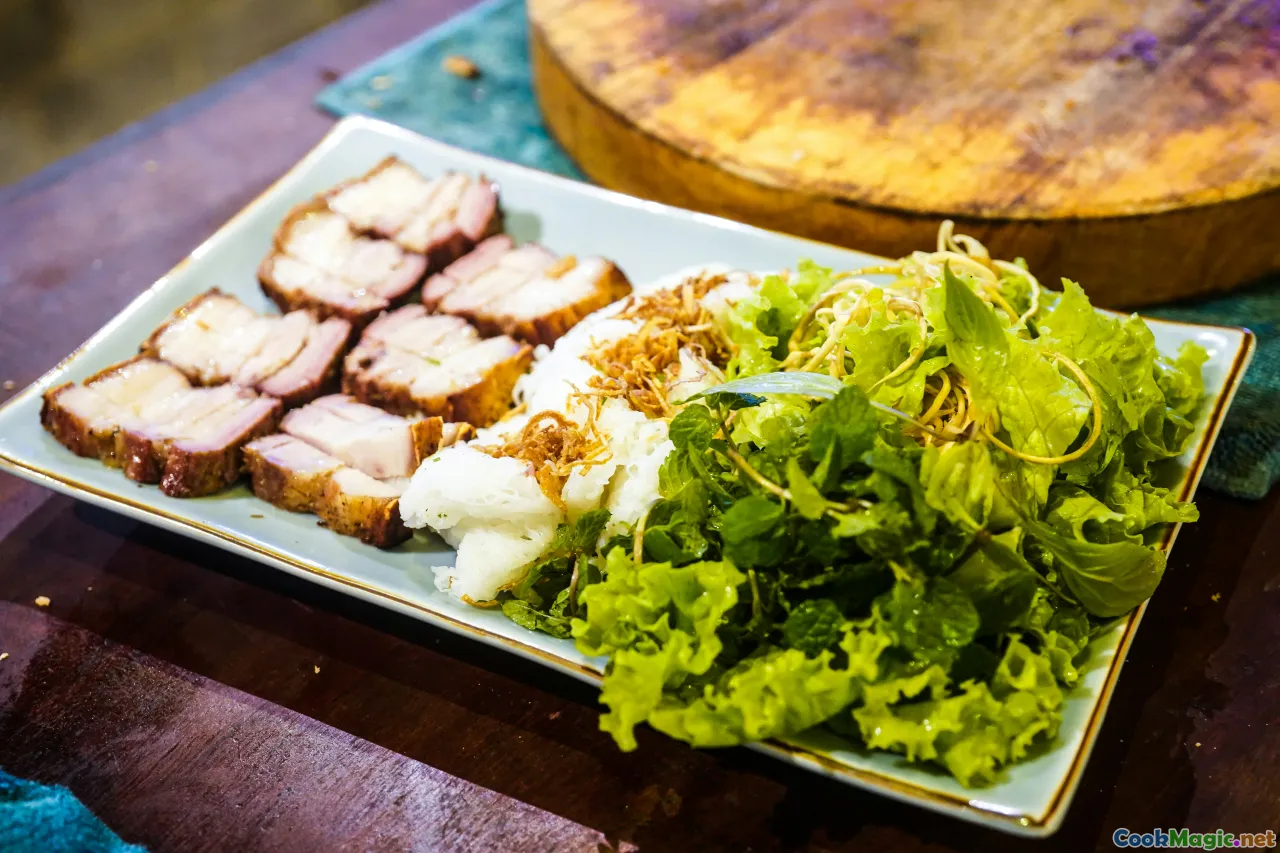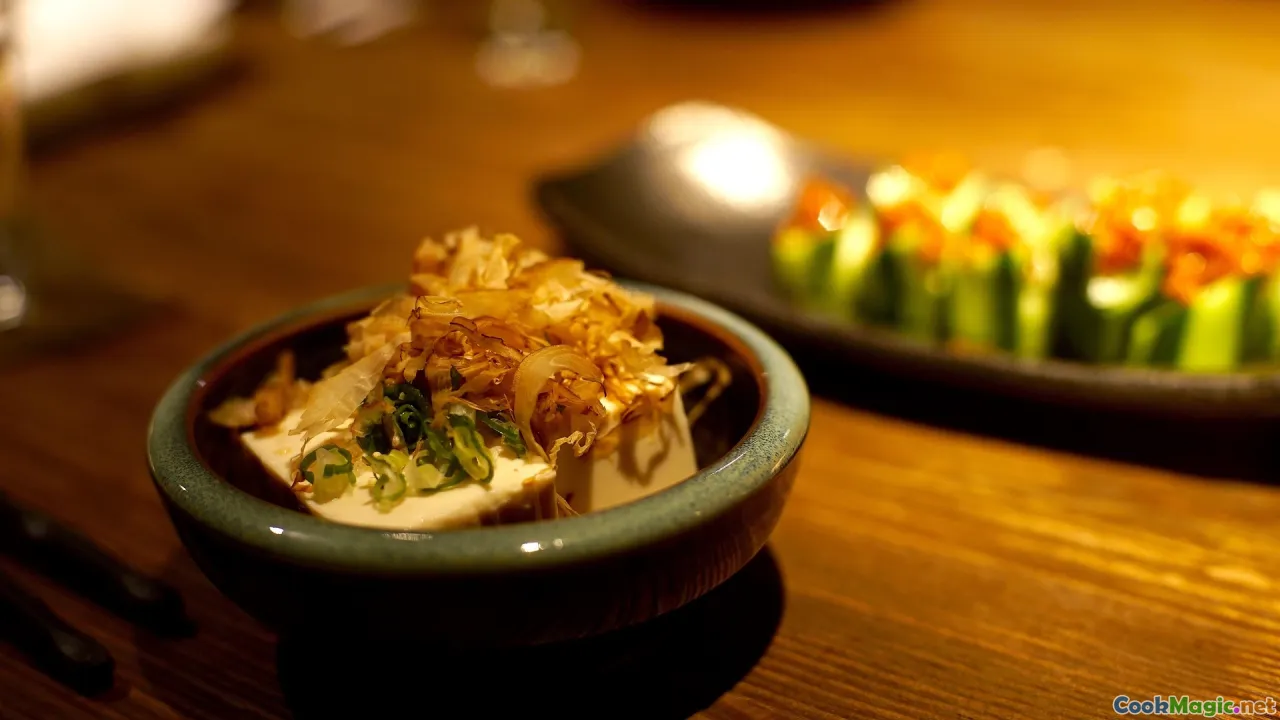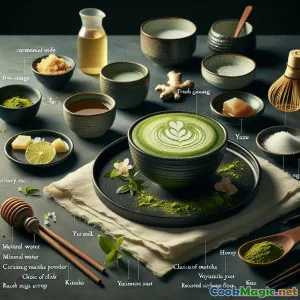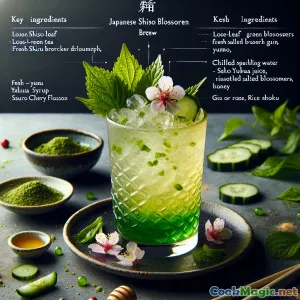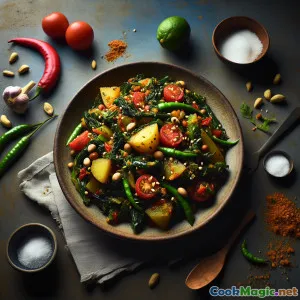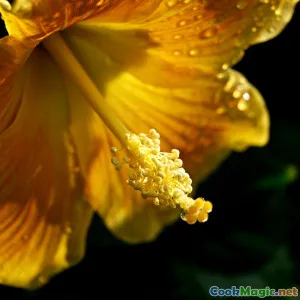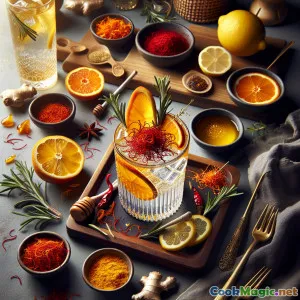
怀石花园和谐:花园怀石美味
(Kaiseki Garden Harmony: Garden Kaiseki Delicacies)
(0 评论)食材
-
200 grams 绢豆腐
(硬豆腐也可以;为了获得最佳效果,请使用本地手工豆腐。)
-
2 tablespoons 味噌酱
(白色或黄色,以获得细腻的风味。)
-
1 small 茄子 (Eggplant)
(有机优先)
-
4 whole 婴儿胡萝卜
(多彩的颜色为盘子增添艺术感。)
-
4 spears 新鲜芦笋
(已修整)
-
30 grams 毛豆
(去壳的)
-
200 ml 蔬菜高汤
(如有可能,自制)
-
1 tablespoon 米醋
(为豆腐增添亮度)
-
1 teaspoon 芝麻油
(纯净, 烘焙)
-
0.5 teaspoon 海盐
(最好是层状酥脆 | 口味自行调整)
-
10 grams 微型蔬菜
(芝麻菜、豌豆苗,或萝卜芽)
-
8 pieces 可食用花卉
(用于着色的三色堇花或旱金莲)
(硬豆腐也可以;为了获得最佳效果,请使用本地手工豆腐。)
(白色或黄色,以获得细腻的风味。)
(有机优先)
(多彩的颜色为盘子增添艺术感。)
(已修整)
(去壳的)
(如有可能,自制)
(为豆腐增添亮度)
(纯净, 烘焙)
(最好是层状酥脆 | 口味自行调整)
(芝麻菜、豌豆苗,或萝卜芽)
(用于着色的三色堇花或旱金莲)
营养
- 份量: 2
- 每份大小: 1 份摆盘拼盘(220 g)
- Calories: 315 kcal
- Carbohydrates: 32 g
- Protein: 19 g
- Fat: 13 g
- Fiber: 9 g
- Sugar: 7 g
- Sodium: 720 mg
- Cholesterol: 0 mg
- Calcium: 210 mg
- Iron: 4.2 mg
制作步骤
-
1 - 把蔬菜切成薄片:
小心地把茄子切成薄圆片,准备胡萝卜和芦笋。
-
2 - 蒸豆腐:
把豆腐块切成两半。蒸10分钟,直到热透为止。
-
3 - 准备调味味增酱:
在一个小碗中混合味噌糊、温热的蔬菜高汤、米醋和芝麻油。搅拌直到顺滑。
-
4 - 烤蔬菜:
将茄子、胡萝卜和芦笋轻轻涂上芝麻油。每一面烤至软嫩并呈焦糖化。
-
5 - 焯毛豆:
在沸腾的盐水中焯2分钟。沥干并擦干。
-
6 - 优雅地摆盘。:
将蒸豆腐摆在中央。以艺术的方式摆放烤蔬菜和毛豆。把味增酱淋在豆腐上,撒上微绿和可食用花卉装饰盘面。
小心地把茄子切成薄圆片,准备胡萝卜和芦笋。
把豆腐块切成两半。蒸10分钟,直到热透为止。
在一个小碗中混合味噌糊、温热的蔬菜高汤、米醋和芝麻油。搅拌直到顺滑。
将茄子、胡萝卜和芦笋轻轻涂上芝麻油。每一面烤至软嫩并呈焦糖化。
在沸腾的盐水中焯2分钟。沥干并擦干。
将蒸豆腐摆在中央。以艺术的方式摆放烤蔬菜和毛豆。把味增酱淋在豆腐上,撒上微绿和可食用花卉装饰盘面。
关于 怀石花园和谐:花园怀石美味 :的更多信息
Kaiseki Garden Harmony: A Celebration of Japanese Culinary Elegance
Kaiseki Garden Harmony is my tribute to the ancient Japanese kaiseki tradition, artfully expressed through a vibrant medley of tofu, seasonal vegetables, tangy miso, and nature’s palate of edible flowers. This recipe marries the grace of Japanese haute cuisine with an accessible, plant-based ethos, making it not only deeply satisfying to eat but a joy to prepare and present.
🪴 The Inspiration and Philosophy
Kaiseki dining is as much culinary performance as it is gastronomy—prizing harmony, balance, and a sense for the fleeting beauty of the changing seasons. Classically, a kaiseki meal comprises a series of small, exquisitely-plated dishes that each showcase an ingredient’s essence. The hallmark is respect for the natural beauty and flavor of premium, local, seasonal fare. In this dish, humble tofu is elevated by luxurious miso and accompanied by bursts of color and flavor from market-fresh vegetables. Each element is treated so as to bring forth both contrast (roasted smokiness and fresh herbal notes) and consonance (velvety, pearlescent tofu offset by bright, lively microgreens).
🌷 Unique Aspects & Elegant Plating
What sets Kaiseki Garden Harmony apart is the intentionality in every bite. It’s not simply a plant-based platter; its logic is grounded in centuries-old Japanese customs—never overshadowing the core flavors, yet transforming them through gentle technique. The recipe harnesses gastronomic contrasts—warm versus cool, soft versus firm, umami base versus tangy top notes—not just to please the tongue, but to delight the eye with every plate.
Plating is an act of creation here. Like gardeners, chefs become arrangers—a few soft clusters of microgreens evoke a forest glade, while edible blossoms hint at the riotous beauty of spring. Let the arrangement reflect your mood and the seasons. When possible, seek out multi-colored baby carrots or purple asparagus tips for a riot of jewel tones. The inclusion of flowers, though optional, connects dinner to nature’s festive moments.
🍶 Tips & Tricks for Refinement
- Homemade Tofu Spoils You: Using fresh, artisanal tofu elevates the flavor far above supermarket blocks. Try sourcing locally made tofu if available;
- Test Your Grill: Charring vegetables gently intensifies flavor. Use a hot griddle pan to form attractive grill marks and caramelize sugars without burning;
- Don’t Overdo Miso: White or yellow miso’s graceful delicacy keeps the sauce from overpowering tofu’s clean taste;
- Edamame Pop: Add a sprinkle of good sea salt just before plating for bright, fresh taste—the salt lifts everything subtly.
🌸 Cultural Significance
Eating in the kaiseki style is considered a slow, meditative act in Japan. Diners are encouraged to contemplate not only flavor but artistry, transience (the fleetingness of perfectly fresh peas, the blossom in momentary full bloom), and connection to the land. It is fundamentally about deepening your appreciation for impermanence and beauty in the everyday.
By making Kaiseki Garden Harmony, you weave yourself a ‘miniature festival.’ Even for a quiet lunch at home, this meal can make you feel present and renewed—just as much a celebration of self-care as of formal dining.
📝 Additional Personal Notes
As a chef, I take special joy in recipes like this, where artistry and nourishment become one. Be unafraid to let the seasons guide small changes—swap squash for aubergine in autumn, use fresh snow peas or wild garlic in the spring. Gateways such as this delicious vegan-friendly kaiseki tasting platter encourage us to bring both earth and artistry to our tables, no matter where in the world we find ourselves.
In Summary: Kaiseki Garden Harmony offers an elevated, thoughtful meal experience with deep cultural roots. Precision in preparation, reverence in plating, and an eye for nature’s beauty—not to mention excellent nutrition—combine to create something truly special.


